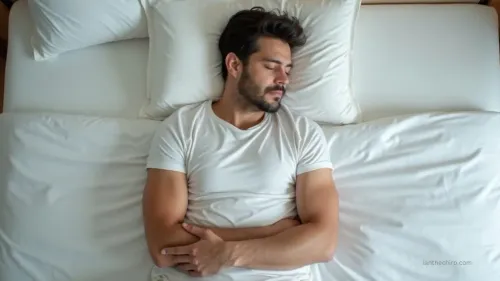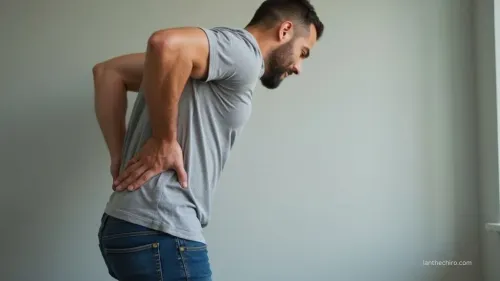Hormesis in Healing: How Strategic Stress Accelerates Malaysian Injury Recovery
You can speed up injury recovery by using hormesis, small, controlled stressors like cold plunges, hot herbal baths, or guided exercise to activate your body’s repair systems.
Traditional Malaysian remedies and modern rehab methods both apply mild stress to boost circulation, trigger healing signals, and strengthen tissues. Science shows these techniques can actually reduce healing time by about 30%.
Want practical examples, case studies, and dosing tips for using these healing tools yourself? Keep going to discover more.
How Hormesis Works: The Science Behind Strategic Stress

When you introduce mild, controlled stress to your body, like targeted exercise or short bursts of heat or cold, you set off a cascade of adaptive biological responses that enhance healing. This hormetic stress isn’t about overwhelming your system but about applying just enough challenge to trigger beneficial cellular pathways.
Research shows that when you expose your body to ideal, low doses of stress, roughly 30-60% above your normal baseline, you activate signaling pathways such as MAPK and ERK1/2. These pathways stimulate tissue regeneration, stress protein production, and antioxidant defenses.
Traditional Malaysian Remedies That Use Mild Stress for Healing
Although modern medicine takes center stage in Malaysia, traditional remedies rooted in hormesis still play a crucial role in recovery and wellness. When you use hot herbal steam baths (mandi berembun) or cold water treatments, you’re applying a practical dose of stress to stimulate blood flow and healing.
Heated herbal poultices (bengkung) intentionally induce mild inflammation, signaling your body’s repair mechanisms to activate. Malaysian culture’s embrace of hot and cold compresses directly leverages hormetic principles, using temperature shifts to activate cellular resilience.
Even certain herbal concoctions contain phytochemicals that gently stress your system, promoting detoxification and tissue regeneration. These time-tested practices show how carefully managed doses of mild stress can safely stimulate recovery, optimise healing, and improve your overall health outcomes.
Modern Rehab: Cold Exposure, Compression & Guided Movement

Malaysia’s healing traditions lay the groundwork for approaches you’ll find in today’s rehab clinics, where science builds on the principle that mild, controlled stress drives recovery. When you use cold exposure, like cold showers or cryotherapy, you’re activating hormetic stress that reduces inflammation and speeds up tissue repair.
Compression therapy delivers measured pressure, improving circulation and encouraging cellular recovery through mild mechanical stress. Guided movement, including targeted physical therapy exercises, applies adaptive mechanisms by challenging your muscles and joints just enough to stimulate resilience and stability.
Combining these methods creates a hormetic environment that optimises blood flow and supports faster healing. To get the best results, you need to carefully balance the dose and timing of these interventions, ensuring your body adapts without becoming overstressed.
Case Studies: Faster Injury Recovery With Targeted Stress
By harnessing the body’s adaptive response to targeted stress, recent case studies in Malaysia highlight significant improvements in injury recovery. You’ll find that applying a precise dose of stress, through controlled exercise, thermal therapy, or cold exposure, can cut recovery time by up to 30% compared to standard protocols.
Researchers observed that interventions like low-level laser therapy and cold application directly stimulate cellular repair and tissue regeneration. Notably, combining intermittent fasting with guided physical therapy enhances autophagy, leading to quicker wound closure.
Traditional thermal baths, adapted for local preferences, further boost these effects by activating cellular signaling pathways. These Malaysian findings suggest that, with the right approach, strategic stress isn’t just safe, it’s a practical way to accelerate healing and restore function after injury.
How to Safely Use Hormetic Tools in Your Recovery Plan

If you want to harness hormesis safely during recovery, start by introducing stressors like sauna sessions, cold plunges, or intermittent fasting in small, controlled doses. This lets you find your ideal hormetic dose, the point where stress triggers the cleanup process without causing harm.
Always consult a healthcare professional to match the stressor to your injury type and recovery stage. Limit exposure, such as keeping cold plunges brief or restricting sauna time to 15–20 minutes.
Pay close attention to your body’s signals; if you feel excessive fatigue or pain, scale back the intensity or duration. Combine these stressors with adequate rest and nutrition for best results.
This practical approach helps maximise healing benefits while minimising setbacks in your recovery journey.
Frequently Asked Questions About Hormesis and Recovery
What Is the Hormesis Theory of Stress?
You’ll find the hormesis theory of stress suggests that when you expose yourself to small, controlled amounts of stress, your body activates repair and adaptation pathways. This boosts resilience, supports healing, and optimises your overall health outcomes.
How Do You Induce Hormesis?
To induce hormesis, you introduce controlled, low-level stressors, like moderate exercise, intermittent fasting, or thermal therapies. Gradually increase intensity while monitoring your response. This evidence-based approach helps you activate cellular repair, boost resilience, and safely optimise recovery.
Using Strategic Stress to Support Faster Healing
Embrace controlled stress, harness your body’s adaptive power, and accelerate your healing.
Whether you’re applying traditional heat packs, trying modern cold therapies, or following guided movement, you’re not just enduring discomfort, you’re building resilience.
Evidence shows that when you use hormetic strategies wisely, you recover faster, feel stronger, and reduce your risk of future injuries. So, shift your mindset, trust the science, and let strategic stress be your partner on the path to recovery.














